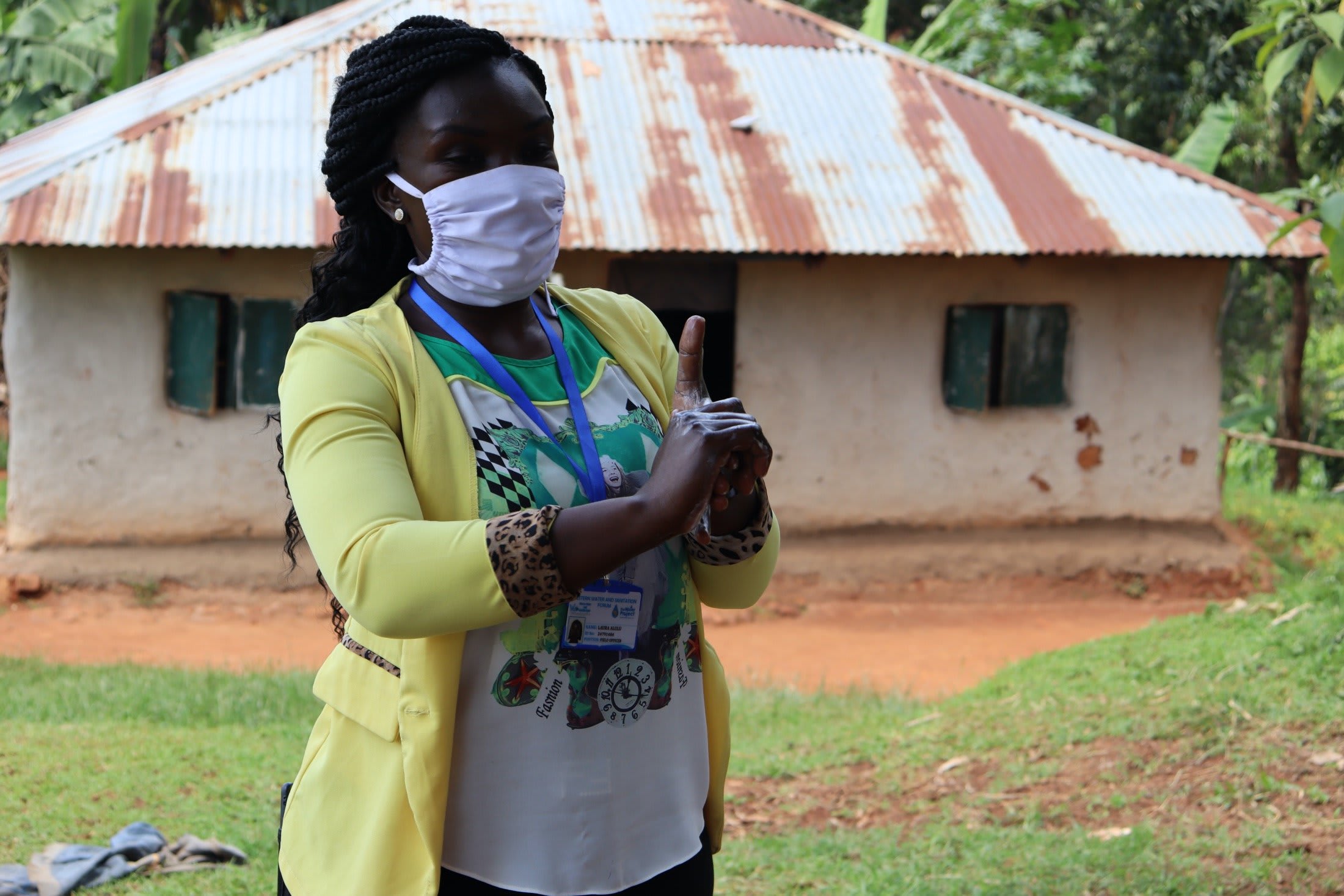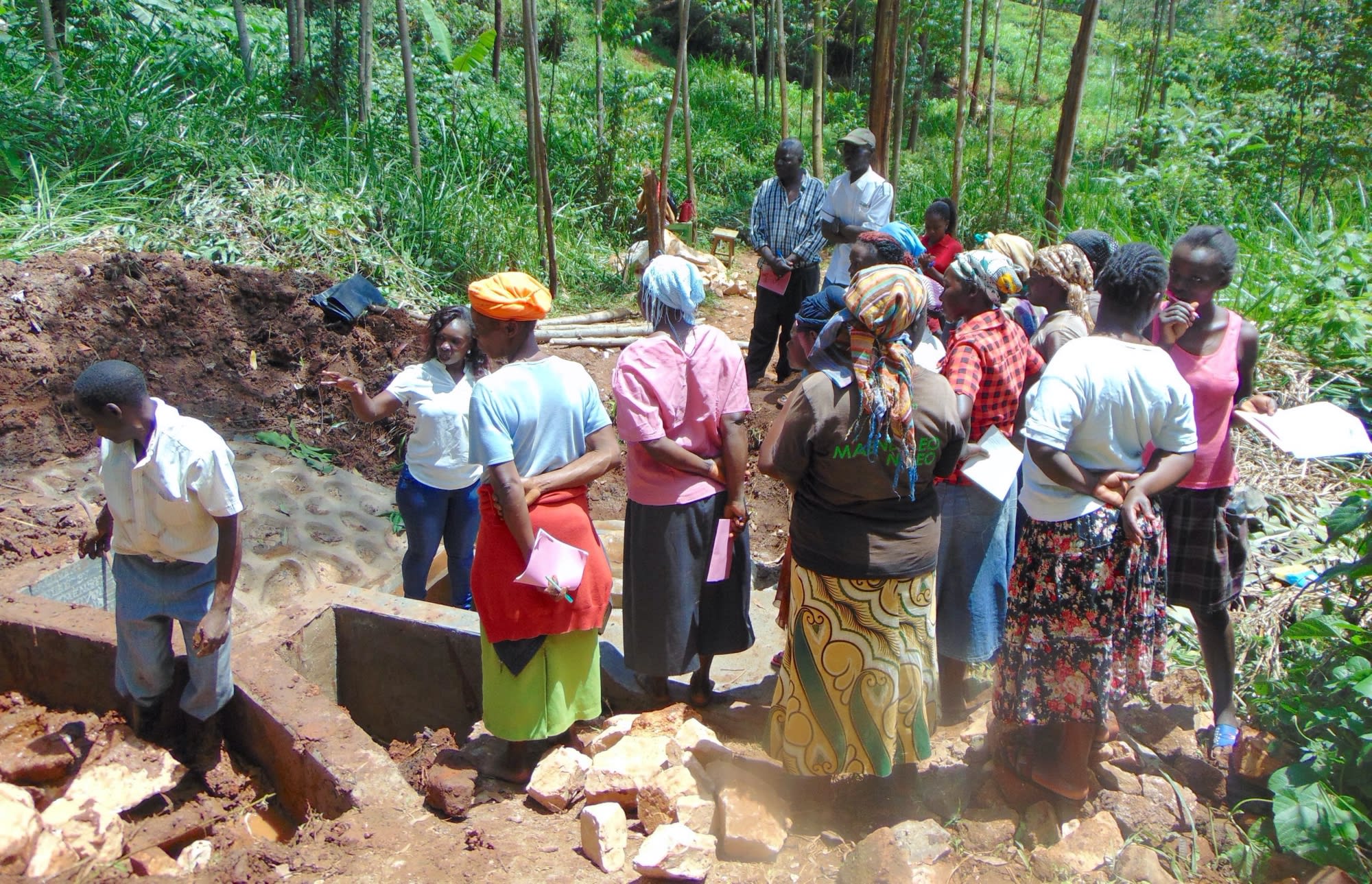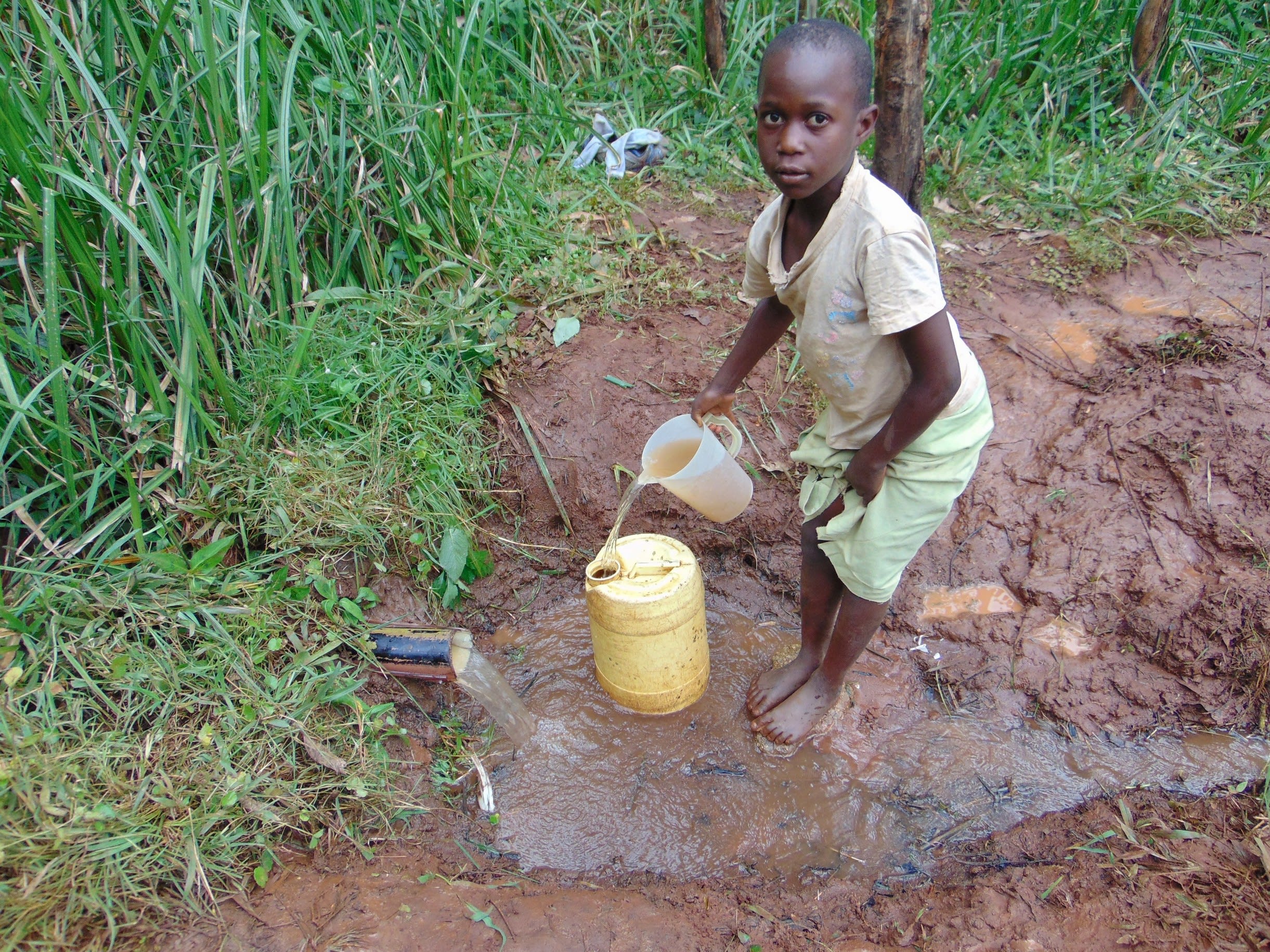Masuveni Community is a peaceful area since it is not near the main road. Most buildings found in this area are mud-walled and semi-permanent because of the socio-economic levels of most families.
The majority of the 350 Masuveni community members live in their paternal homes, where you also find the grandparents and the grandchildren in the same compound, though they might be staying in different houses. The men are often responsible for earning the money, whereas the mothers are responsible for taking care of the children.
The main livelihood here is selling farm produce as the majority of the community members here depend on farming. This implies that they are self-employed. Most of the food they get from their farms goes toward feeding their households, and what remains is sold making this a source of income and livelihood.
An average day for a community member here starts at 6:00 am. They have to wake up early to get the children off to school and tend to their farms. They work until 1:00 pm when they return home to have lunch. The women often go home earlier to begin preparations for lunch for their husbands and children who come home to eat each school day. After resting for a few hours, they attend to their businesses from 4:00 pm to 6:00 pm and then they return home to have family time. At this point, the mothers are responsible for preparing dinner for the family while the fathers take time to bond with the children. The day ends at 9:00 pm when they retire to bed.
The main source of water for people here is Masuveni Spring. The location of the spring is not far from most homes. When it rains, the area near the spring becomes very muddy. That mud makes it difficult for people to access the water and makes the already unsafe waterpoint even less safe due to all the contaminants that collect in the water. A temporary discharge pipe was placed into the spring to help prevent people from collecting water after it pools, but it is not very stable. This means that people often resort to filling their containers with water after it comes out of the pipe.

Even when it is possible to fill up containers directly from the pipe, the water is not safe for consumption. Since there is no spring protection to keep away contaminants, run-off from nearby farms and households filters into the water.
"Not having enough clean water really affects our lives because we spend a lot of money going to the hospital to seek medication because of the rampant waterborne diseases. Also, our social lives are affected because women mostly quarrel over getting dirty water," explained Henry Matore, a farmer in the community.
This spring is a great candidate for protection. There is plenty of water available - it takes just 20 seconds to fill a 20-liter container! The spring is also away from the main road and there are no trees planted nearby that will affect the amount of water available. Protecting the spring will help ensure that contaminants stay out and that people can easily access the water coming from the spring.
By protecting this spring, the rate of waterborne diseases will go down. People will save a lot of time. Right now, they must wait for the water to clear up before fetching water at the spring. They will be assured of a better way of fetching water because now the discharge pipe will be permanent and will not fall out or need to be replaced over time.
What we can do:
Spring Protection
Protecting the spring will help provide access to cleaner and safer water. Construction will keep surface runoff and other contaminants out of the water. With the community’s high involvement in the process, there should be a good sense of responsibility and ownership for the new clean water source.
Fetching water is predominantly a task carried out by both women and young girls. Protecting the spring and offering training and support will, therefore, help empower the female members of the community by freeing up more of their time and energy to engage and invest in income-generating activities.
Training
Community members will attend hygiene and sanitation training for at least 2 days. This training will ensure participants have the knowledge they need about healthy practices and their importance.
The facilitator plans to use Participatory Hygiene and Sanitation Transformation (PHAST), Community-Led Total Sanitation (CLTS), Asset-Based Community Development (ABCD), group discussions, handouts, and demonstrations at the spring. One of the most important topics we plan to cover is the handling, storage, and treatment of water. Having a clean water source will be extremely helpful, but it is useless if water gets contaminated by the time it is consumed. We will also emphasize the importance of handwashing.
Training will result in the formation of a committee that will oversee the operations and maintenance of the spring. They will enforce proper behavior around the spring and delegate tasks that will help preserve the site, such as building a fence and digging proper drainage channels. The fence will keep out destructive animals, and the drainage will keep the area’s mosquito population at a minimum.
Sanitation Platforms
On the final day of training, participants will select 5 families that should benefit from new concrete latrine floors. Training will inform the community and selected families on what they need to contribute to make this project a success. They must mobilize locally available materials, including bricks, clean sand, and gravel. The 5 families chosen for sanitation platforms must prepare by sinking a pit for the sanitation platforms to be placed over. All community members must work together to make sure that accommodations and food are always provided for the work teams.

 Protected Spring
Protected Spring
 Rehabilitation Project
Rehabilitation Project







































